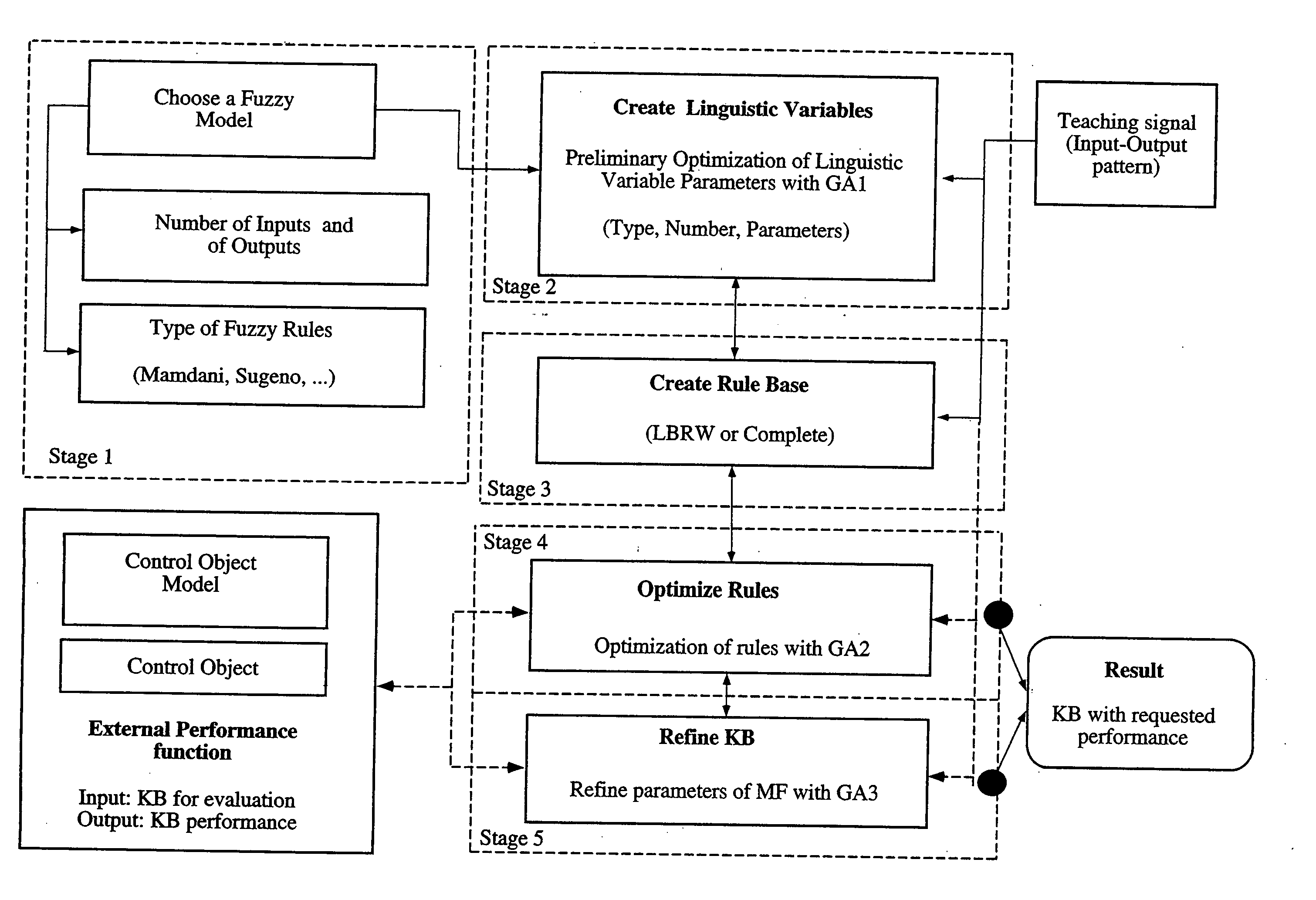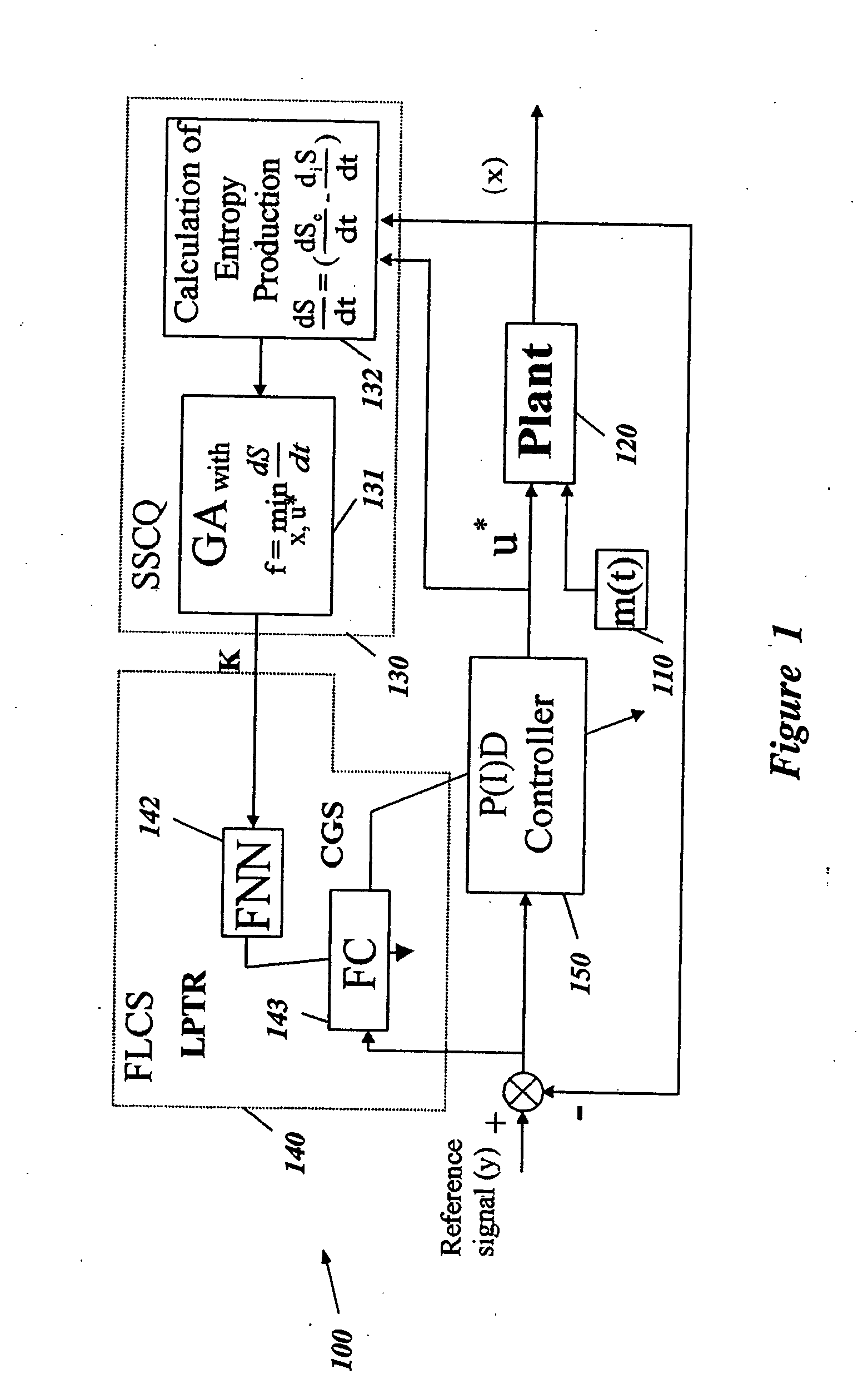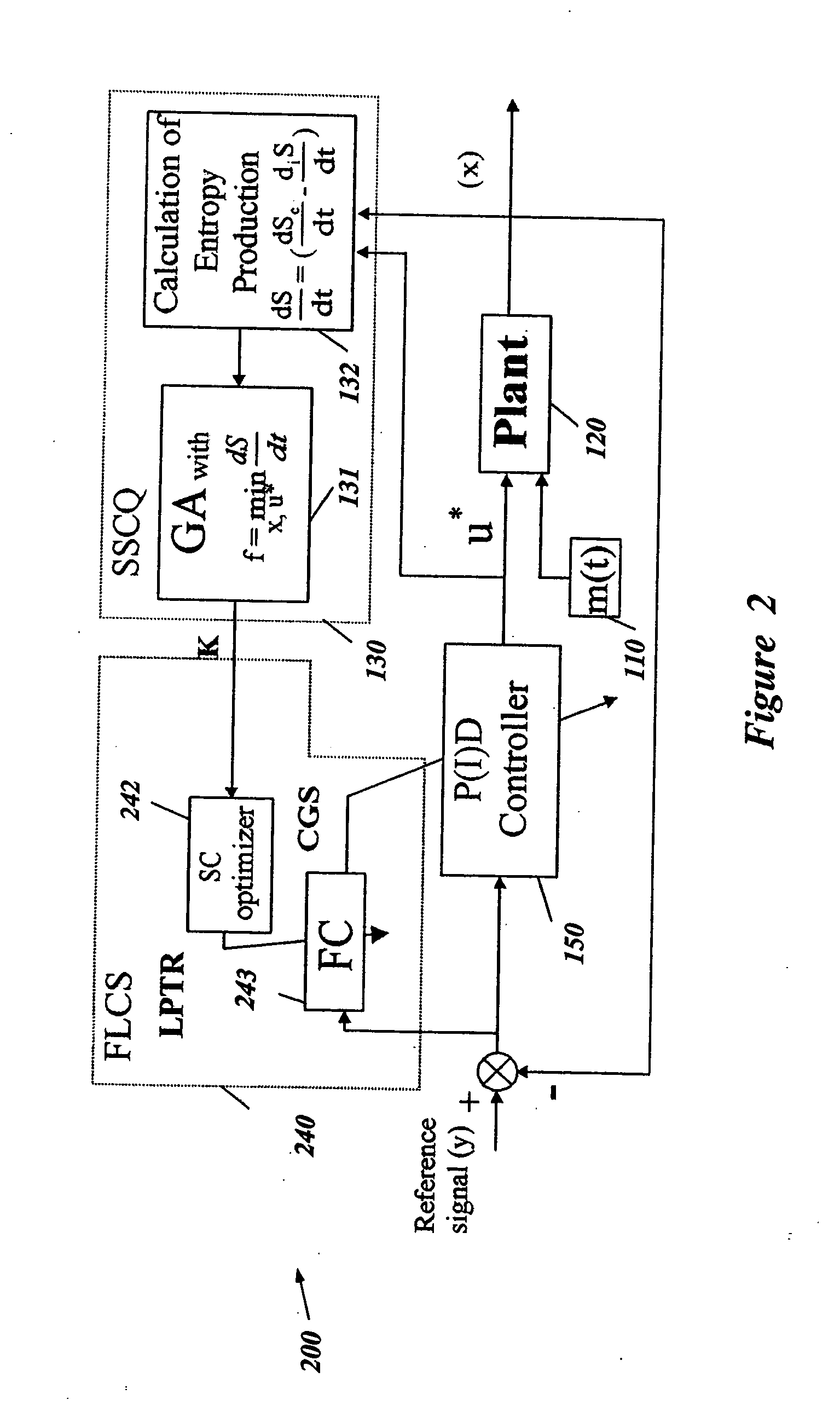Soft computing optimizer of intelligent control system structures
- Summary
- Abstract
- Description
- Claims
- Application Information
AI Technical Summary
Benefits of technology
Problems solved by technology
Method used
Image
Examples
Embodiment Construction
[0088]FIG. 1 shows a self-organizing control system 100 for controlling a plant based on Soft Computing (SC). The control system 100 includes a plant 120, a Simulation System of Control Quality (SSCQ) 130, Fuzzy Logic Classifier System (FLCS) 140 and a P(I)D controller 150. The SSCQ 130 includes a module 132 for calculating a fitness function, such as, in one embodiment, entropy production from of the plant 120, and a control signal output from the P(I)D controller 150. The SSCQ 130 also includes a Genetic Algorithm (GA) 131. In one embodiment, a fitness function of the GA 131 is configured to reduce entropy production. The FLCS 140 includes a FNN 142 to program a FC 143. An output of the FC 143 is a coefficient gain schedule for the P(I)D controller 150. The P(I)D controller 150 controls the plant 120.
[0089] Using a set of inputs, a fitness function 132 in a GA 131 works in a manner similar to an evolutionary process to arrive at a solution which is, hopefully, optimal. The GA 131...
PUM
 Login to View More
Login to View More Abstract
Description
Claims
Application Information
 Login to View More
Login to View More - R&D
- Intellectual Property
- Life Sciences
- Materials
- Tech Scout
- Unparalleled Data Quality
- Higher Quality Content
- 60% Fewer Hallucinations
Browse by: Latest US Patents, China's latest patents, Technical Efficacy Thesaurus, Application Domain, Technology Topic, Popular Technical Reports.
© 2025 PatSnap. All rights reserved.Legal|Privacy policy|Modern Slavery Act Transparency Statement|Sitemap|About US| Contact US: help@patsnap.com



